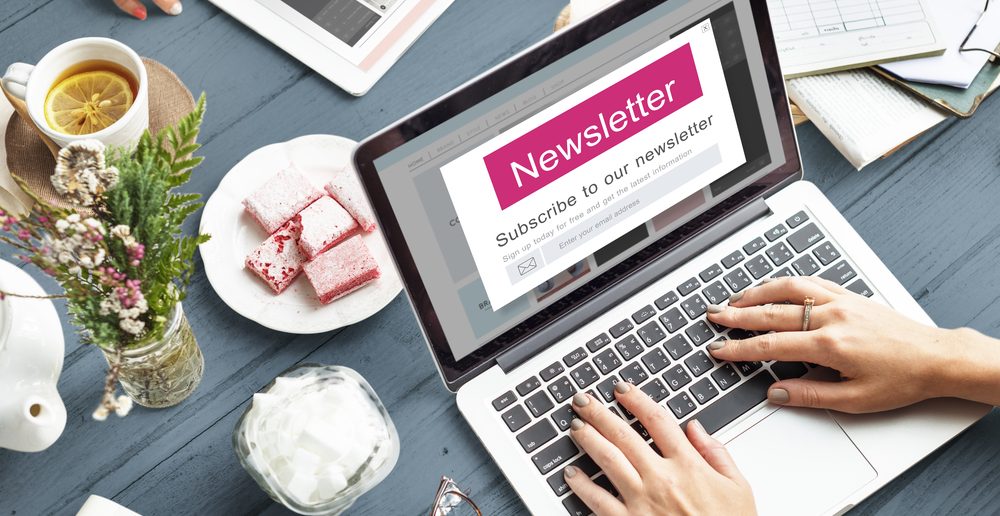Many factors require vigilance when starting a newsletter, but the task comes with many benefits that make newsletter curation important for an organization. The key elements of a newsletter include:
- Plan well for regular content.
- Focused on specific topics and contains specific benefits for readers.
- Delivered to consumers who opted for it.
- Designed with the aim to achieve some particular goal.
Choosing the right type of newsletter depends on what works best for your business and the goals you’re trying to achieve. Below are different types of newsletters with clear differences based on different targets, pick the one that suits you the best.
-
Based on Audience: These kinds of newsletters target achieving the goals that are related to the audience like building customer relationships etc.
-
Company Newsletters– This includes internal information, news, updates that are important for employees. The aim is to keep the members of the board updated on the comings and goings of a business.
-
Consumer Newsletter– The newsletter is focused towards two broadly divided categories of customers: customers and potential customers. The aim is to nourish and strengthen a business’s relationship with its consumer audience. It provides them with offers and the business with an opportunity to increase sales.
-
Based on Content: Content-oriented newsletters might seem similar but all of them approach different goals through different content.
-
Practical Newsletters–It provides subscribers with quick and easy tips that they can use in their daily lives. The newsletter includes endorsement of your products through the tips and by explaining how they fit in.
-
User-generated Newsletters–You use user-generated content in these kinds of newsletters. Now, user-generated content can range from reviews to case studies. The aim is to exhibit the value that you give to customer feedback.
-
Reporting Newsletters– An editor collects and curates news stories for these newsletters, which are written from a journalistic perspective. They include real, relevant and influential stories that are of interest to the audience.
-
Promotional Newsletters– As the name suggests, the newsletter is focused towards providing promotional offers that will increase sales. As per Statista, 49% like to have such newsletters from their favorite brands on a weekly basis.
Starting a Newsletter
At what point should you look forward to starting a newsletter? [The point at which you feel that you have some worthwhile offer for the audience and you can steadily produce engaging and relevant content.]
Key Points to Remember while Create a Successful Newsletter
- Use successful newsletters as a reference: Look for newsletter both inside and outside your industry and use them as examples.
- Reconsider starting a newsletter: If it isn’t right for your marketing, it is just a waste of your time. Do your research and figure out if people even opt for newsletter subscriptions in your industry. Look out for successful newsletters in your industry.
- Figuring out the right kind of newsletter: The problem that often arises is that these newsletters are cluttered and unfocused. The solution is to keep it limited to one specific topic.
- Keep it balanced: Your newsletter should include 90% educational content and 10% promotional content. Not even a single subscriber would like to hear about your products and service the whole time.
- “Subscribe” page: This is the place where the journey of receiving a newsletter will begin for a customer. Make this page specific and tell them exactly how you will utilize the space that you’ll get in their inbox.
- Go beyond the regular, monotonous subject lines: Subject lines that get reused by marketers wears quite fast for the subscribers. Make it creative and give the subscribers some incentive to make them click on the email instantly.
- One primary CTA: Newsletters are basically multiple pieces of content with multiple CTAs. This does not necessarily mean that you should fill your newsletter with them. Rather, select only one main thing that you want your subscribers to do.
- Minimalistic design: The trick here is to leave enough white space and use a compact and to-the-point copy. Your reader doesn’t have all the time in hand to read your newsletter all day long. The ideal length is about 75-100 words.
- Images should have alt text: Include alt text to ensure that if images fail to load, text will still convey your CTAs. Remember that visual content, often used to convey a CTA, is an essential part of the newsletter.
- Easy to unsubscribe: To ensure that your newsletter is not marked as spam, make sure to include an unsubscribe button. This will help maintain an engaged and active subscriber list.
- Finding out what works and what doesn’t: To do so, test different content and notice what works and what does not work.
Reasons Why your Newsletter is Not Working
- Boring subject lines.
- A copy that is too long.
- Newsletters marked as spam.
- Not intentional enough to drive sales.
Newsletters are one of the best ways to let your readers know about interesting content, announcements and promotions. Furthermore, they are efficient in driving traffic to your website. Additionally, they serve as another advertising vehicle and a smart way to track your engaged audience.
For information on another topic – An Effective Newsletter Marketing Strategy to Gain Brand Exposure



